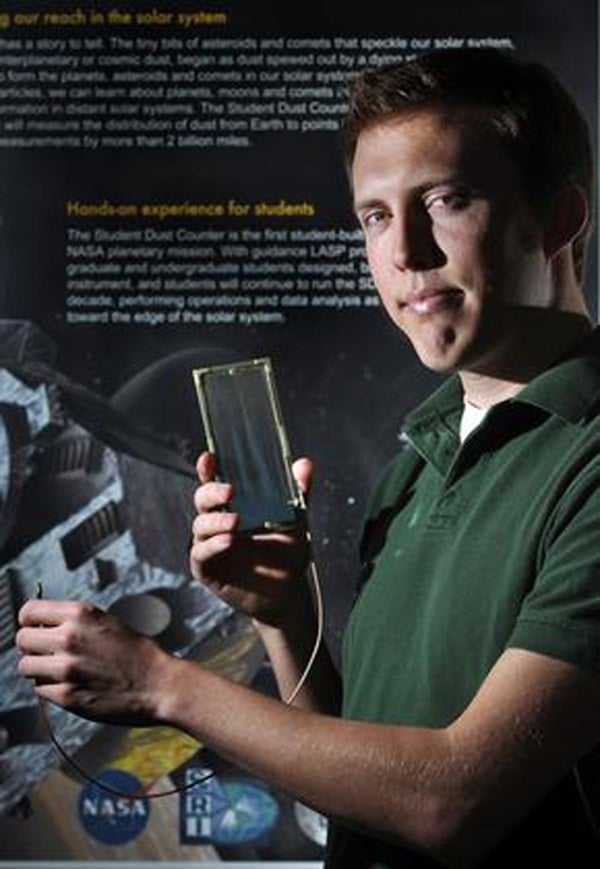A University of Colorado at Boulder space dust counter designed, tested, and operated by students that is flying aboard NASA’s New Horizons mission to Pluto now holds the record for the most distant working dust detector ever to travel through space.
The instrument on the New Horizons mission — officially named the Venetia Burney Student Dust Counter (SDC) — reached a distance of 1.67 billion miles (2.69 billion kilometers) from Earth October 10. Designed by a student team from the University of Colorado, SDC was launched in 2006 aboard the New Horizons spacecraft, which is now slightly beyond the orbit of Uranus.
Traveling at 30,000 mph (48,000 km/h), the New Horizons spacecraft recently passed the halfway point in distance to Pluto and is slated to make its closest approach to the dwarf planet July 14, 2015.
Dust grains in the solar system are of high interest to researchers because they are the building blocks of the solar system’s planets. Scientists are particularly interested in dust that New Horizons is expected to encounter in the Kuiper Belt, a vast region beyond Neptune’s orbit that contains thousands of icy objects that are thought to contain samples of ancient material formed in the solar system billions of years ago.
The only other dust-detecting instruments to measure space dust beyond the orbit of Jupiter — which is inside the orbit of Uranus — flew aboard NASA’s Pioneer 10 and Pioneer 11 spacecraft in the 1970s.
“The New Horizons mission is going to break a lot of records, but this early one is one of the sweetest,” said Alan Stern from the Southwest Research Institute in Boulder, Colorado. “We’re very proud to be collecting solar system dust data farther out than any mission ever has, and we’re even prouder to be carrying the first student-built and student-operated science instrument ever sent on a planetary space mission.”
“It’s a once-in-a-lifetime experience to be part of the group of students who made this happen,” said Andrew Poppe from the University of Colorado. “We built a record-breaking, successful instrument that is taking scientific measurements to advance our understanding of the role of dust in our solar system.”
Poppe said the data collected by SDC was in agreement with earlier dust measurements made by NASA’s Galileo and Ulysses missions to Jupiter.
The SDC is a thin plastic film resting on a honeycombed aluminum structure the size of a cake pan mounted on the outside of the spacecraft. A small electronic box inside the spacecraft functions as the instrument’s “brain” to assess each individual dust particle that strikes the detector. The microscopic-sized dust grains hitting the SDC create unique electrical signals, allowing the students to infer the mass of each particle.
SDC will continue to return information to Earth on the dust that strikes its detectors during the spacecraft’s approach to Pluto and beyond. “The improved observations that SDC will make available will advance our understanding of the origin and evolution of our own solar system, as well as help scientists studying planet formation in dust disks around other stars,” said Mihaly Horanyi from the University of Colorado.










